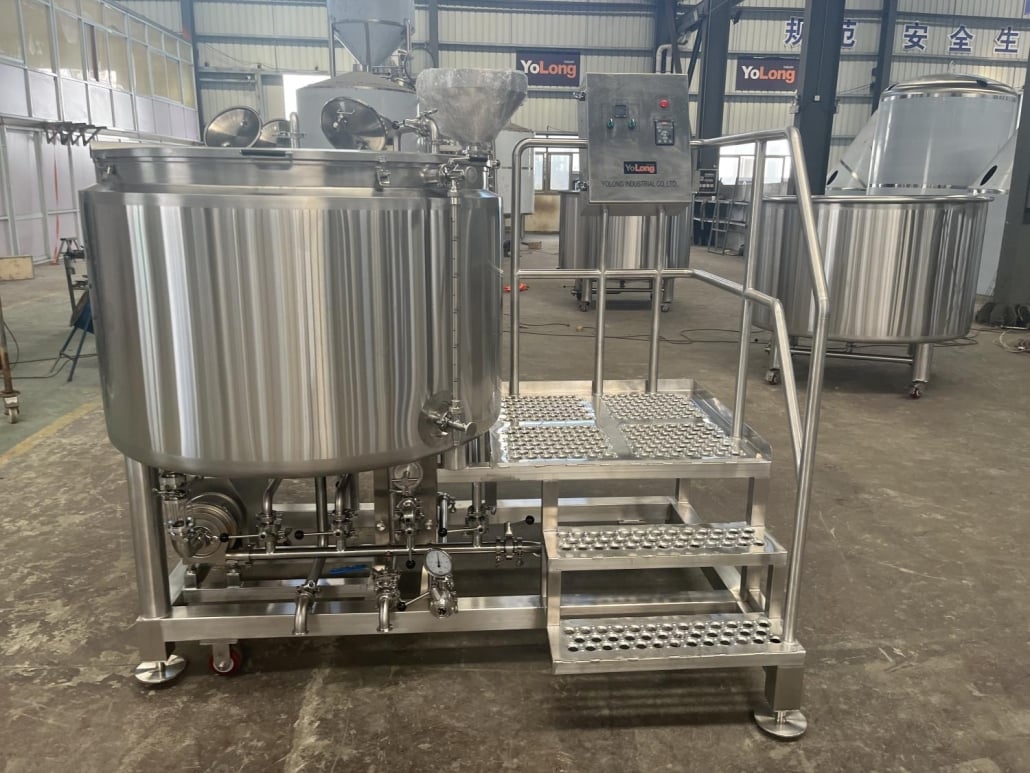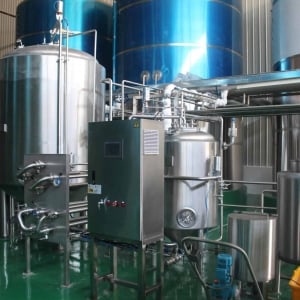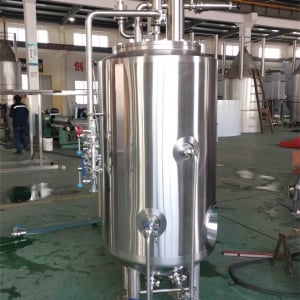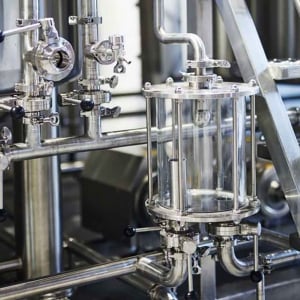Professional Beer Brewing Equipment
Beer brewing has evolved from a simple, small-scale hobby to a professional, large-scale industry. If you’re diving into the world of brewing or looking to expand your brewery, understanding the essentials of professional beer brewing equipment is critical. This guide will walk you through everything you need to know about the equipment needed for professional brewing, from an overview of the key components to selecting the best suppliers, installation, and customization. Let’s get started!
Overview of Professional Beer Brewing Equipment
Professional beer brewing is a complex process that requires a wide range of equipment, each designed for specific stages of brewing. From milling the grains to fermenting the brew, every step involves specialized machinery that ensures quality, consistency, and efficiency in production.
Brewing systems are available in various capacities and configurations to suit the needs of both microbreweries and large-scale commercial operations. The equipment is designed for precision, durability, and scalability, allowing brewers to produce different styles of beer while controlling the fermentation and flavor profiles.
In this article, we’ll break down professional beer brewing equipment into several key sections, including equipment types, brewing process, customization options, supplier choices, pricing, and more.

Professional Beer Brewing Equipment Guide
When considering professional beer brewing, you’ll need to evaluate several critical equipment components. Each piece of equipment has its function in the brewing process, and they all work together to produce a consistent, high-quality product.
Key Equipment Types and Their Uses
| Equipment Type | Description and Function |
|---|---|
| Mash Tun | Used to mix grains with hot water in the mashing process to convert starches into fermentable sugars. |
| Lauter Tun | Separates the wort (liquid extract) from the spent grains after mashing, creating clear wort for brewing. |
| Boil Kettle | Wort is boiled in this kettle to sterilize and extract hop flavors. |
| Fermentation Vessels | Where yeast is added to the cooled wort, fermenting the sugars into alcohol. |
| Brite Tanks | These tanks are used for conditioning and carbonation after fermentation before packaging. |
| Heat Exchanger | Rapidly cools the wort after boiling to prepare it for fermentation, preventing contamination. |
| Grist Mill | Crushes the malted barley to an appropriate consistency for mashing, ensuring optimal extraction during the brewing process. |
| Glycol Chiller | Controls the temperature during fermentation and storage, ensuring stable fermentation conditions. |
| CIP (Clean-in-Place) System | Automated system for cleaning brewing tanks and equipment, ensuring sanitation and preventing contamination. |
| Kegging/Bottling Lines | Equipment for packaging the beer, whether it’s for kegs, bottles, or cans. |
Each of these components plays an essential role in the brewing process, and getting the right combination of equipment will determine your efficiency, batch size, and beer quality.
The Beer Brewing Process Explained
The brewing process involves several steps, each requiring specialized equipment. Let’s break it down.
1. Milling
The first step in the brewing process is milling the malted grains using a grist mill. The goal is to crush the grains to extract fermentable sugars. The size of the grain crush affects the efficiency of the brewing process.
2. Mashing
Once the grains are milled, they are transferred to the mash tun, where hot water is added to activate enzymes that convert starches into sugars. This process creates a sugary liquid called wort.
3. Lautering
After mashing, the wort is separated from the spent grains in the lauter tun. The goal here is to extract as much liquid as possible, leaving behind the solid grain husks. Sparging (adding water) helps extract additional sugars.
4. Boiling
The wort is transferred to the boil kettle, where it is boiled to sterilize it and allow for the addition of hops. Hops provide bitterness, aroma, and flavor to the beer. The boiling process typically lasts 60 to 90 minutes.
5. Cooling
After boiling, the wort is rapidly cooled using a heat exchanger to prepare it for fermentation. Cooling must happen quickly to prevent contamination.
6. Fermentation
Once cooled, the wort is transferred to fermentation vessels where yeast is added. The yeast consumes the sugars in the wort, producing alcohol and carbon dioxide. This process can take anywhere from a few days to several weeks depending on the beer style.
7. Conditioning
After fermentation, the beer is conditioned in brite tanks. This step allows for carbonation, maturation, and flavor development. The beer can be held in these tanks until it’s ready for packaging.
8. Packaging
Finally, the beer is packaged in kegs, bottles, or cans using dedicated packaging lines. At this point, it’s ready for distribution or consumption.
Capacity, Space, Design, and Layout Customization
Choosing the right brewing system involves careful consideration of your brewery’s size, production goals, and available space. Here’s a breakdown of key factors you need to evaluate:
| Parameter | Details |
|---|---|
| Capacity | Breweries range from small microbreweries producing a few hundred liters per batch to large-scale breweries producing thousands of liters. The capacity you choose will depend on your production goals and market demand. |
| Space Requirements | Brewing equipment takes up a significant amount of space. Ensure you have enough room for not just the brewing system but also storage, packaging, and movement. For example, a 10-barrel system might need around 2,000 square feet. Consider ceilings as some tanks are quite tall. |
| Design & Layout | The design of your brewing system should focus on efficient workflow, from the delivery of raw materials to packaging. It should also comply with safety and sanitation regulations. For instance, a linear layout minimizes backtracking and reduces production time. |
| Customization Options | Many brewing equipment manufacturers offer customization options, allowing you to choose specific tank sizes, heating methods (steam, electric), and control systems that best suit your brewing style. Customization is often necessary to fit your space and accommodate different beer styles. |
Supplier Guide for Professional Beer Brewing Equipment
Selecting the right supplier is crucial for the success of your brewery. Factors to consider include equipment quality, after-sales support, pricing, and customization options. Here’s a comparison of popular suppliers and their pricing ranges.
| Supplier Name | Specialization | Price Range (USD) | Customization | Warranty & Support |
|---|---|---|---|---|
| SS Brewtech | Small to medium brewing systems | $20,000 – $150,000 | Yes | 1-year warranty, technical support available |
| Blichmann Engineering | Homebrewers to mid-sized breweries | $10,000 – $100,000 | Limited | 1-year warranty, online support |
| Ager Tank & Equipment | Large-scale brewing systems | $50,000 – $500,000 | Extensive | 2-year warranty, on-site support |
| Systech Engineering | Turnkey brewery solutions | $100,000 – $1,000,000 | Yes | 2-year warranty, 24/7 support |
How to Operate Professional Beer Brewing Equipment
Operating professional beer brewing equipment requires a mix of technical skill, careful monitoring, and knowledge of brewing science. Here are key operational tips for each stage of the brewing process:
Mashing
The mashing process involves carefully controlling temperature and timing. Too high a temperature can denature enzymes, while too low won’t allow proper sugar extraction. Automation tools help maintain the correct temperature throughout the process.
Boiling
During boiling, it’s essential to monitor the boil for boilovers and ensure that the wort is vigorously boiled. Adding hops at different intervals requires close attention to timing to achieve the desired bitterness, flavor, and aroma.
Fermentation
Maintaining a consistent temperature during fermentation is crucial, and glycol chillers are often used to ensure the right conditions for yeast activity. Automated control panels can help monitor temperature and CO2 levels.
Packaging
Whether you’re kegging or bottling your beer, packaging systems should be sanitized thoroughly to avoid contamination. Monitoring pressure levels and CO2 during carbonation will ensure that the beer is properly carbonated before being sealed.
Installation, Operation, and Maintenance of Professional Brewing Equipment
Proper installation, operation, and maintenance are key to the longevity and performance of brewing equipment. Here’s an overview of what’s involved in each stage:
| Aspect | Details |
|---|---|
| Installation | Installation should be handled by professionals, including plumbing, electrical, and gas connections. Alignment of tanks and piping is crucial for safety and efficiency. |
| Operation | Operating brewing equipment requires trained personnel who understand the nuances of each stage, from milling to packaging. Automation helps streamline the process, but human oversight is critical. |
| Maintenance | Regular cleaning and inspection of the equipment are vital. CIP systems help automate the cleaning of tanks, but manual inspections for wear and tear are still necessary. Replace gaskets, valves, and other parts as needed to prevent leaks and contamination. |
How to Choose the Right Supplier for Professional Brewing Equipment
Choosing the right
supplier for your brewing equipment involves more than just comparing prices. Here’s a table with key factors to consider when making your choice:
| Factor | What to Look For |
|---|---|
| Reputation | Research the supplier’s track record and customer reviews. Are they known for high-quality equipment and excellent support? |
| Customization Options | Can the supplier customize equipment to fit your specific brewing needs and space? |
| Technical Support | Look for suppliers that offer robust technical support, including troubleshooting and on-site repair services. |
| Price vs. Value | Evaluate the cost of the equipment relative to the features offered. A lower-priced system may not offer the same durability or efficiency as a higher-priced option. |
| Warranty and Aftercare | A longer warranty and comprehensive aftercare services, such as routine maintenance, can save you money and reduce downtime in the long run. |
Advantages and Limitations of Professional Beer Brewing Equipment
Like any large-scale investment, professional beer brewing equipment comes with both pros and cons. Here’s a comparison to help guide your decision-making process:
| Advantages | Limitations |
|---|---|
| Scalability: Professional brewing equipment can easily scale with your business, allowing you to increase production as demand grows. | Cost: Initial investment in professional brewing equipment can be substantial, especially for larger systems. |
| Efficiency: Modern equipment automates many processes, reducing labor costs and increasing consistency. | Space Requirements: Large brewing systems take up significant space, requiring substantial floor space and storage areas. |
| Customization: You can tailor equipment to your specific brewing style and facility layout. | Maintenance: Proper maintenance and repairs require specialized knowledge and can add to long-term costs. |
| Product Quality: Professional equipment helps maintain consistency, ensuring that each batch of beer meets quality standards. | Learning Curve: Operating complex systems may require extensive training, particularly if you’re transitioning from home brewing. |

FAQ
| Question | Answer |
|---|---|
| How much does professional beer brewing equipment cost? | The cost varies significantly depending on the size and complexity of the system, ranging from $10,000 for small systems to over $1,000,000 for large commercial setups. |
| What capacity should I start with? | This depends on your production goals and market demand. A 3 to 10-barrel system is common for small breweries, while larger operations might need 30 barrels or more. |
| What are the maintenance requirements? | Regular cleaning with a CIP system, routine inspections for wear and tear, and periodic replacement of parts such as gaskets and valves. |
| Can I upgrade my system later? | Yes, many suppliers offer modular systems that can be expanded as your brewery grows. It’s a good idea to plan for future expansion when selecting your initial equipment. |
| How long does installation take? | Installation time varies based on the complexity of the system and the readiness of your facility. It can take anywhere from a few weeks to several months. |
Conclusion
Investing in professional beer brewing equipment is a major step in starting or expanding a brewery, and it comes with a variety of choices and considerations. From selecting the right size and capacity to understanding the brewing process and supplier options, this guide has provided a comprehensive overview. Proper planning, research, and a clear understanding of your brewery’s goals will help you choose the right equipment that ensures both quality and efficiency in your brewing journey.













